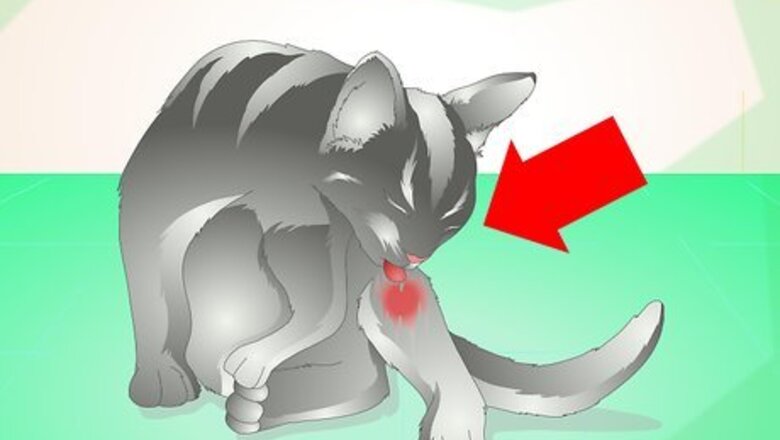
views
X
Research source
If you think that your cat may have an abscess, take your cat to a veterinarian for wound care and antibiotics. Your cat's veterinarian will advise you on how to care for the wound and administer medications. As your cat recovers, you will also need to keep him confined and watch the wound closely.
Getting Veterinary Care for Your Cat
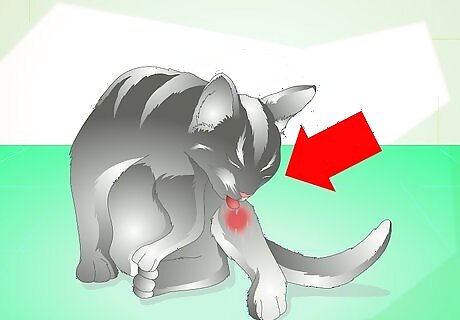
Look for signs of an abscess. The body responds to a bite by sending white blood cells to combat the bacteria. Then, the tissues around the wound swell and start to die. This forms a cavity that fills with pus that is made up of bacteria, white blood cells, and dead tissue. The cycle continues and the area continues to swell. The swelling may be hard or soft. Other signs of an abscess include: pain or signs of pain such as limping a small scab with redness or warmth in the surrounding skin oozing of pus or fluid from the area loss of hair over the area licking, grooming or nibbling at the area loss of appetite or energy an opening that drains pus
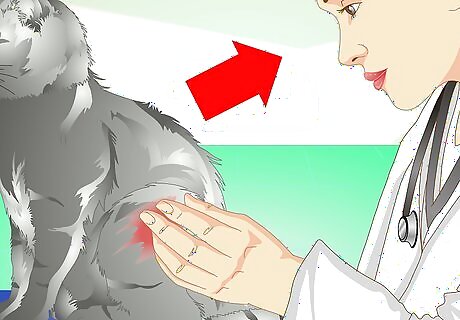
Take your cat to a veterinarian. You can treat a small, draining abscess at home, but most abscesses will require treatment from a veterinarian. When you bring the cat to the veterinarian's office, the cat will get a full physical examination. Most often the cat will also have a fever with an abscess because his body is fighting off an infection. If the abscess is open and draining, then it may be possible to treat the cat without sedation. If the abscess is not open, then the cat may need to be sedated in order to lance the abscess.
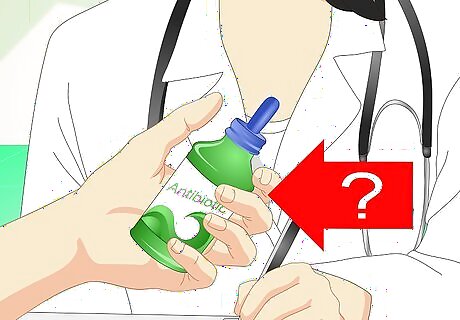
Ask about antibiotics. The veterinarian may send some of the pus for an antibiotic culture. This culture will help the veterinarian to determine the most effective antibiotic to use. After a sample has been collected, the abscess wound will be lanced (if it is not already draining pus and fluid), debrided (cleansed of all pus and debris), and treated with antibiotics. Give the antibiotics to your cat as directed and finish the medicine completely. Call the veterinarian if you are having trouble administering the medicine to your cat.
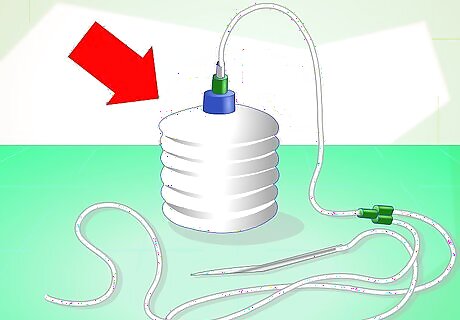
See if a drain is required. Sometimes it may be necessary to place drains, which are tubes used to keep the wound open. These tubes help the pus to continue draining from the wound. Otherwise, pus may continue to build up and cause more problems for your cat. Follow the veterinarian's advice for caring for the drains as well as what complications might arise from a drain and when to call the veterinarian. Your cat's veterinarian will take out the drains three to five days after placement.
Caring for a Cat's Abscess at Home
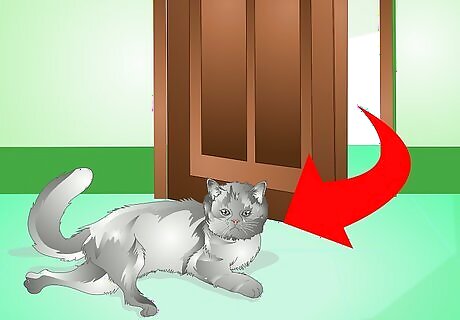
Confine your cat to a room while the abscess heals. Confining your cat to an indoor room is the best way to keep him safe from further injury while the wound heals. The wound will keep draining for some time, so there is a potential for your cat's wound to drip pus on the floor and furniture. To prevent pus from getting onto your carpet and furniture, keep your cat confined to a room until the abscess has healed. Keep your cat in a room with an easy to clean surface like a bathroom, laundry room, or mud room. Make sure that the room is warm enough for your cat and that you provide necessities such as food, water, a litter box, and some soft blankets or towels for your cat to sleep on. Check on your cat often during his confinement to provide affection and to make sure that he is eating, drinking, and eliminating as he should be.
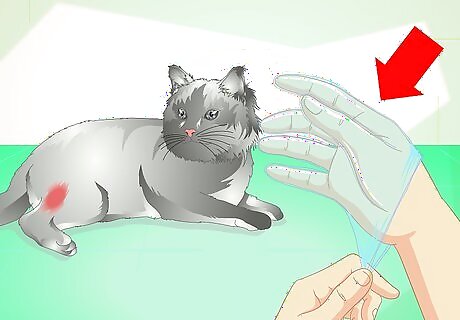
Wear gloves when you care for your cat's wounds. Your cat's wound will be leaking pus that is made up of blood, bacteria, and other biological fluids. Do not care for your cat's wounds with bare hands. Make sure that you wear some vinyl or latex gloves whenever you clean or inspect the wound.
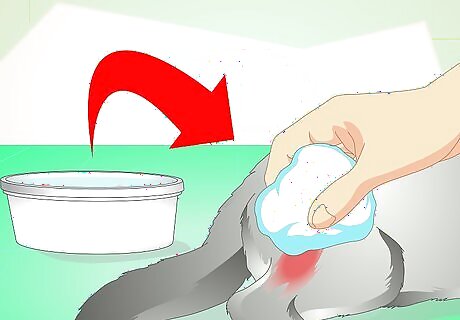
Keep the wound clean. You can clean your cat's wound with plain, warm water. Take a clean rag or washcloth and soak it in warm water. Then, use the cloth to wipe away all of the pus from your cat's wound. Rinse the cloth and repeat until all the visible pus is gone. Wash around any drains with a rag or washcloth soaked in warm water.
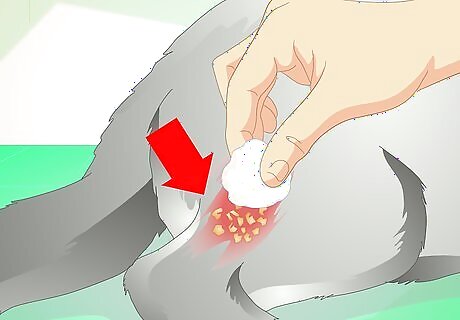
Remove crust and scabs with care. If a crust or scab forms over the opening of an abscess that still has pus inside, then you can gently remove the crust or scab by soaking the area with a warm, wet washcloth. You do not need to worry about scabs if there is no pus or swelling. If you are unsure, always call your cat's veterinarian first. To loosen a crust or scab that has formed over your cat's wound, soak a washcloth in warm water. Then, wring out the excess water and place the cloth over the wound. Hold it there for a few minutes to help soften up the crust or scab. Then, gently wipe the wound with the cloth. Repeat this process two to three times until the crust or scab softens and slides off the wound. Abscesses take about 10-14 days to form, so keep checking the scabbed area to see if it begins to swell. If you notice any swelling or pus, then take your cat to the veterinarian.
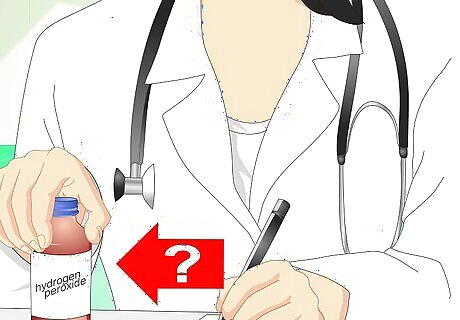
Ask your cat's veterinarian before using hydrogen peroxide. Use of hydrogen peroxide is controversial because studies have shown that use of hydrogen peroxide in the wound itself is not only painful but can further damage infected tissues delaying healing. Plain water or a special antiseptic solution made from water and povidone iodine is best. To be safe, check with your cat's veterinarian to determine if hydrogen peroxide is a good choice for your cat's wound. If you do use hydrogen peroxide, make sure that you dilute it with water on a one to one basis. Then, saturate a cotton ball or piece of gauze with the solution. Use the cotton ball to gently wipe the debris and pus away from the wound's edges. Do not use this solution directly on the wound. You can do this two to three times a day.
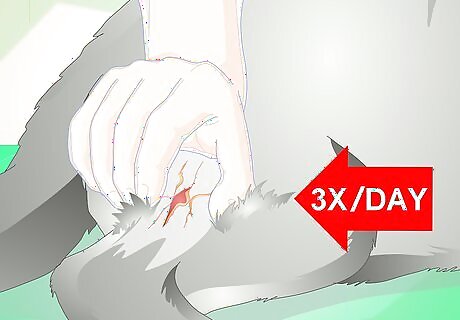
Check the wound often. Observe your cat's wound two or three times a day. When you check the wound, make sure that it is not swollen. Swelling indicates that the wound is infected. If the wound is swollen, then call your cat's veterinarian. When you check your cat's wound each day, pay attention to the amount of pus that it is draining. Your cat's wound should be draining less pus with each passing day. If it seems to be draining more or the same amount of pus, then call your cat's veterinarian.

Prevent your cat from licking or chewing the wounds. It is important to make sure your cat does not lick or chew on the drains or wound because the bacteria in your cat's mouth can worsen or cause an infection. If your cat does seem to be licking or chewing at the wounds or drains, then call your cat's veterinarian. To prevent your cat from licking and chewing, your cat may need to wear an Elizabethan collar while the wound heals.




















Comments
0 comment